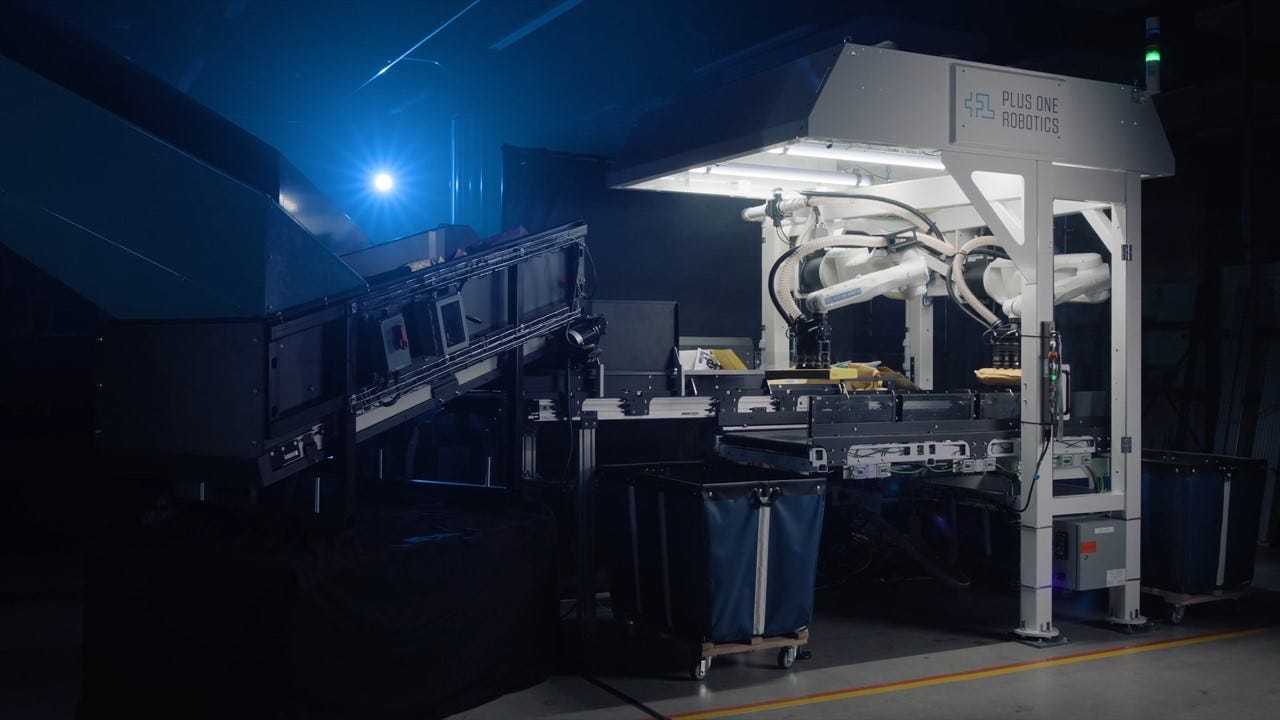How to Choose a Company North Star That Actually Works
Goal Setting Lessons from Plus One Robotics CEO Erik Nieves
Erik Nieves from Plus One Robotics and I met in a literal fireside chat. Founders from promising robotics startups across the country had gathered to share thoughts on performance metrics and benchmarking in hardware companies.
The conversation highlighted that in hardware, targets vary greatly across companies. No two companies had the same guiding metrics and many CEOs were honest about their reluctance – and sometimes disdain – for the ones they use. The goals varied, and it seemed like everyone had a different reason for choosing what to focus on.
Then, Erik explained his team’s north star and why they use it. When he shared, everything clicked. He unlocked the generalizable insights and ideas I am always looking for to share with the founders I work with.
Erik explained how their north star aligned with customer needs, united his team and ultimately drove the company forward. You could immediately see how every member of Plus One Robotics contributed to improving the number and how it simplified decision-making when priorities competed for attention.
I followed up with Erik to learn more about finding his north star. As we enter annual planning season, I hope his experience helps you find one that serves you as well as “Continually increasing our customers’ picks per day” serves Plus One Robotics.
The Journey to a North Star Metric
Plus One Robotics develops AI-based computer vision and robotic systems to offer automated material handling solutions for logistics and ecommerce customers. They knew when they started that if they could build a machine that works, big players would buy it. (They told them this.) So, they focused on building a machine that works.
It won’t surprise you to hear that early on, Erik and the team focused on technical outputs like vision processing time and time between failures. As a developer of novel systems, they set technology-related goals, and product development guided their work. Erik says,
“One of the technical outputs we obsessed over in the early days was ‘vision processing time,’ the duration from when the camera snapped an image until we commanded the robot's next move. We wanted to ensure ours was the fastest in the market. This became less important over time and now we never talk about it.”
We hear this all the time. Metrics change as companies evolve and learn more about what matters most. Later in Plus One’s journey they focused on sales targets and other commercial goals. Many of them were S.M.A.R.T., but they still weren’t right.
Center Your Customer’s Jobs to be Done
A turning point came when Plus One shifted its perspective from its technology to its customers. Businesses exist to serve customers, and focusing on them was clarifying. Plus One asked themselves,
“What do our customers ask us to deliver?”
“What is the customer hiring this electromechanical laborer to accomplish?”
“Why would they hire this automaton over another?”
Plus One’s logistics customers care about one thing above all else: moving goods efficiently. They must process as many packages as possible within their cutoff windows (before the plane takes off).
Asking these questions surfaced a more customer-centric way of looking at the technology. To their customers, robots are hired, not bought. They would hire anyone who walked in the door and moved 3,000 packages per hour. That would be superhuman. So, Plus One built that robot.
Volume matters to their customers, so Plus One made volume matter to them. Instead of orienting the technology goals around features like vision processing time, they focused on customer goals like packages moved.
That’s why “Continually increasing our customers’ picks per day” is the company’s north star.
A Goal Everyone Can Pursue
Increasing picks per day aligned the company’s and customers’ goals and had a unifying effect across the company. Unlike vision processing time, picks per day is a metric that everyone across the company could impact somehow. It’s not an isolated metric for a handful of software developers that makes no difference to everyone else.
Sales teams could rally around it because adding new accounts meant adding picks per day. Engineers could rally around it because improving performance or increasing uptime meant adding picks per day. Support teams could rally around it because taking that call from a customer meant adding picks per day. You could find paths to improving picks per day in legal, finance, talent, or any other department.
Erik says, “When it became clear that their metric became our metric, it was motivating.” The team aligned around it, and the effects were immediate. Engineers wrote better software, sales focused on finding the right customers, and even tough conversations with clients became easier to navigate.
So what makes a great north star?
Like all good goals, a good north star is simple, measurable, and tied to the company’s mission. A great north star has additional qualities that make it powerful:
1. Customer-centric: The metric helps guide the company toward what matters most to its customers. For Erik, customers cared about maximizing throughput, and his team’s metric directly aligns with that goal.
2. Unifying Impact: Everyone in the company – from engineers to salespeople and talent to finance – can influence the metric. Shared accountability creates alignment and camaraderie across teams.
3. Storytelling: A strong metric tells a story. Hitting revenue targets or churning customers is often discussed in dollars and cents. “Picks per day” takes that same sales win and creates a narrative around the customer's goals. It transforms churned revenue into a story about how the solution failed to deliver value.
How can your company identify the right one?
The first step to solving your problem is admitting the problem exists.
For a while, Erik and his team thought their motto #robotsworkpeoplerule WAS their north star. Erik says, “I was so into this motto that I didn’t see the need for anything beyond that.” But it isn’t a call to action. It isn’t measurable. It isn’t S.M.A.R.T. in any way. And it certainly isn’t customer-centric or unifying for the team.
As you enter annual planning mode and consider your guiding light and the metrics to focus on, here’s a starting point:
1. Listen to Your Customers: What are they asking you to deliver? What pain does your company solve for them? How might you align your company goals with the goals of your customers?
2. Make It Broadly Applicable: Consider whether every team in your company can influence the goal. If it’s only relevant to one department, it still may be worth tracking, but it may not do enough to unify the organization.
3. Keep It Simple: Your metric should be easy to understand and explain. If you’re not already measuring it, you’re probably overthinking it. Clarity fosters alignment.
Remember, it’s okay if your metric evolves. Erik’s team didn’t land on “Continually increasing our customers’ picks per day” overnight, and metrics may shift as your business grows. The key is to start with something meaningful and iterate as needed.
The right north star is more than a number. It’s a unifying force that aligns teams, clarifies priorities, and drives focus.
Ask yourself: What’s the one thing that matters most to my customers and my team?
Start there, and let the process guide you to your own north star.
Thank you to Erik Nieves for the masterclass on choosing a north star metric. His company, Plus One Robotics, is hiring! You can learn more here.



